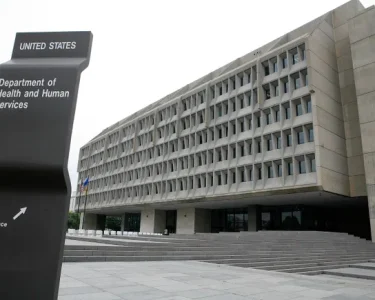The following is a guest article by Katie Sender, MSN, RN, PHN, CRC, Vice President, Clinical and Coding Solutions, Cotiviti
Today, healthcare companies face rising costs, technology gaps, and new and evolving mandates and standards. Success depends on learning from the past while proactively shaping the future. With the shift to value-based care accelerating, risk adjustment has grown more complex as a result of stricter regulations, deeper audits, and declining reimbursements. For health plans, achieving accurate risk adjustment outcomes is no longer a back-office function but a strategic imperative that drives compliance, financial stability, and competitive advantage.
Here are five key strategies to help health plans build resilient, compliant, and financially sustainable risk adjustment programs.
1. The Regulatory Imperative: Accuracy is Critical
The risk adjustment environment has been fundamentally reshaped by major policy and audit changes that demand precision and proactivity. Medicare Advantage (MA) plans now face unprecedented scrutiny, where documentation accuracy and operational efficiency are critical to financial sustainability.
The Centers for Medicare & Medicaid Services (CMS) is expanding audits from roughly 60 plans a year to all 550 MA contracts while increasing the number of medical records reviewed per plan, from 35 to as many as 200, to improve the reliability of audit findings. The Office of the Inspector General’s recent findings of overpayments, including an estimated $7.5 billion from Health Risk Assessments (HRAs) and $377 million from other audits, underscore regulators’ intent to re-evaluate the entire model. These trends require plans to move from a retrospective “chase” approach to an integrated, proactive strategy.
2. Payer-Provider Collaboration: The Foundation of Accuracy
The most effective way to mitigate risk is by evolving the payer/provider relationship from transactional to strategic. Retrospective data exchange alone is no longer sufficient. A new framework built on aligned incentives, shared goals, and streamlined communication is essential for both financial performance and improved patient outcomes.
Accurate documentation is the starting point. Health plans can support providers with tools that make documentation easier and communication more efficient, reducing administrative burden and improving data accessibility.
To operationalize this model, health plans should combine financial incentives, actionable data, and consistent education. Leading plans are investing in dashboards, feedback loops and targeted education and ongoing training on coding changes.
By providing resources, education, and insights, health plans can become extensions of the provider care team, which creates a partnership that improves both member outcomes and more accurate risk adjustment for the plan.
3. Proactive Auditing and Data Normalization: Building an Operational Bedrock
With heightened regulatory scrutiny, health plans need a foundation of data integrity and audit-readiness. Auditing should shift from a periodic event to a continuous, proactive process.
Internal audits are now essential for identifying documentation gaps and coding discrepancies before CMS does. A proactive overpayment recovery strategy not only reduces financial risk but also demonstrates a commitment to compliance, strengthening standing with regulators and mitigating the risk of larger penalties in the future.
The majority of patients utilize their primary care provider’s portal—but they often have additional portals spanning other providers, pharmacies, and insurers. In 2024, 59% of patients reported having multiple portal accounts. Therefore, data normalization is equally critical. Standardizing documentation and data enrichment processes ensure that data is correct, reliable, and actionable to drive stronger risk adjustment outcomes and better partnerships with their provider network. Further, data normalization is a foundational step for any analytics or artificial intelligence (AI) initiative.
4. The Strategic Integration of AI and Human Expertise
Applying AI to risk adjustment programs requires a nuanced, expert-level approach. AI is not a magic bullet or a replacement for human expertise, but used responsibly and with strong governance and ethical oversight, it can significantly improve efficiency, accuracy, and compliance.
AI and natural language processing (NLP) can uncover missed diagnoses, prioritize high-risk charts, and identify mismatched records. However, limitations remain, such as difficulty with handwritten notes or interpreting negative language. As CMS has made clear, these tools must be auditable, transparent, and compliant. The ultimate responsibility for clinical and coding decisions rests with human experts, as AI is susceptible to bias from the data on which it is trained. If a plan’s AI is biased towards over-reporting conditions in certain demographics or care settings, it could lead to both regulatory fines and ethical dilemmas.
Effective implementation begins with education and clear use cases. Multidisciplinary teams of experts should define test tools in a “sandbox” environment and use a scorecard to measure performance. Red flags, such as coders over-relying on AI suggestions, must be addressed to ensure that technology complements, rather than replaces, sound clinical decision-making.
5. Building a Partnership-Driven Ecosystem: Creating Sustainable Success
To ensure long-term sustainability, health plans must deploy a forward-looking strategy built on interoperability, trust, and transparency. A resilient program is not just technologically advanced but operationally sound and partnership-driven.
Interoperability initiatives such as the Trusted Exchange Framework and Common Agreement (TEFCA) and CMS’s Interoperability and Prior Authorization Final Rule create strong incentives for modern data exchange. The Fast Healthcare Interoperability Resources (FHIR) standard enables real-time access to diagnoses, labs, and encounters, reducing reliance on retrospective chart reviews and supporting ongoing audit-readiness and quality improvement.
Risk adjustment and quality programs are often siloed despite sharing a common data source: the medical record. Interoperability standards like FHIR and TEFCA can eliminate redundant chart reviews, close gaps for both risk and quality, and provide a holistic, unified view of the member to the provider. This alignment improves operational efficiency, strengthens financial incentives, and ultimately leads to better member outcomes.
The shift to value-based care has elevated risk adjustment into a critical business function. With stricter regulatory oversight and financial risk, reactive approaches are no longer sustainable. Success requires true payer/provider partnerships, normalized and interoperable data, and AI-augmented workflows grounded in human expertise.
Health plans that build resilient, partnership-driven ecosystems will be best positioned to remain compliant, financially stable, and prepared for the future.
 About Katie Sender, MSN, RN, PHN, CRC
About Katie Sender, MSN, RN, PHN, CRC
With over 25 years of healthcare experience, Katie Sender is responsible for leadership and management oversight of teams spanning the globe to ensure optimal client outcomes and service delivery through Cotiviti’s Clinical and Coding solutions.




